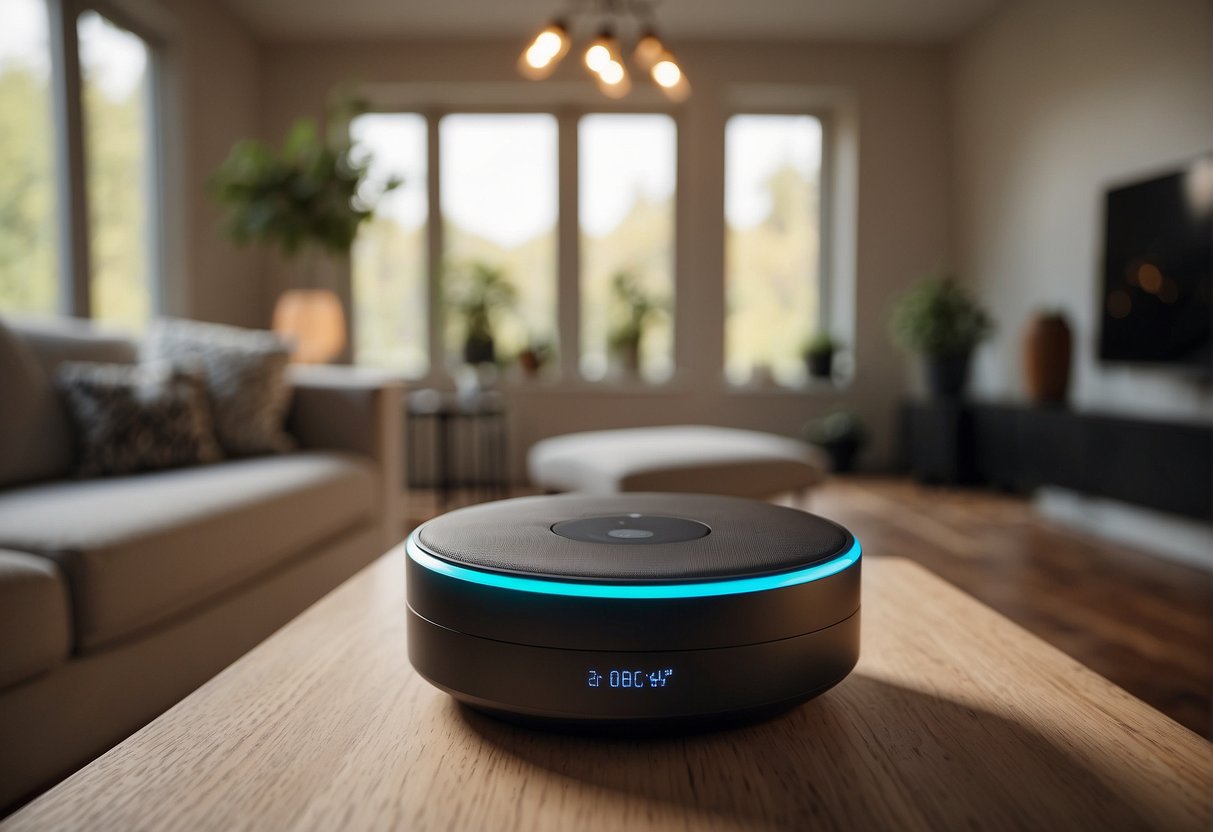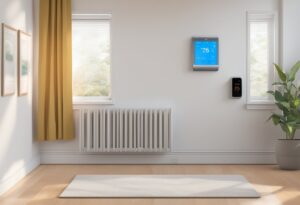With technology evolving at an unprecedented pace, the concept of the smart home has transitioned from a futuristic vision into a mainstream reality.
Smart home essentials have redefined how we interact with our living spaces, offering a blend of convenience, security, and energy efficiency.
The foundation of smart home technology is the ability to control and monitor devices remotely, providing homeowners with the power to make adjustments to their environment with just the touch of a button or a simple voice command.
At the heart of the smart home are core devices that serve as the building blocks for a connected living experience.
These include smart doorbells that enhance home security by providing real-time video feeds and communication with visitors, smart sensors and detectors that warn of potential dangers such as smoke or water leaks, and smart thermostats that optimize heating and cooling for comfort and energy savings.
Integrating these devices into a cohesive system bolsters the home’s intelligence, turning a collection of gadgets into a unified, responsive entity.
Key Takeaways
- Smart homes provide enhanced control and monitoring for improved convenience and security.
- Core smart home devices include smart doorbells, sensors, and thermostats.
- A unified smart home system integrates various devices for a seamless living experience.
Understanding Smart Home Basics
In a smart home, every device coordinates seamlessly to create a convenient, efficient, and secure living space.
This section delves into the core components and connectivity requirements of smart home systems.
What Is a Smart Home?
A smart home utilizes advanced technology that allows devices and appliances to communicate with one another and be managed remotely. Smart home essentials typically include:
- Sensors: They act as the eyes and ears, detecting changes in the environment such as temperature, light, or motion.
- Smart Devices: These include items like smart thermostats, lights, and security cameras, which can be controlled via smartphones or voice commands.
- Central Control Hub: It serves as the command center, interpreting sensor data and sending instructions to various devices.
Smart home technology transforms ordinary homes into intelligent ecosystems that enhance the inhabitant’s lifestyle by providing personalized automation and control over various home functions.
The Role of Internet Connectivity
For a smart home to function effectively, internet connectivity is crucial. It is the underlying thread that weaves together different smart devices, enabling them to operate in unison. Here’s how internet connectivity impacts smart homes:
- Frequencies: Most smart home devices rely on 2.4 GHz or 5 GHz frequencies, essential for device communication.
- Wi-Fi Dependency: A consistent and reliable Wi-Fi connection is vital for the seamless operation of smart technologies.
- Remote Access: Internet connectivity allows homeowners to control their smart home systems from anywhere, enhancing convenience and security.
In summary, the foundation of a smart home lies in the interconnectedness facilitated by internet connectivity, without which, the efficiency of smart home technology would be greatly diminished.
Core Smart Home Devices
Smart home essentials revolve around connectivity, control, and convenience. They integrate seamlessly into one’s daily life to enhance the living experience.
Smart Speakers and Voice Assistants
Smart speakers, such as the Amazon Echo and devices powered by Google Assistant, are central to interacting with other smart devices. They act on voice commands, allowing users to control various aspects of their home environment without lifting a finger. One can ask Alexa to play music, set alarms, or provide a weather update.
Smart Plugs and Lighting
- Smart plugs fit into traditional outlets and grant one the ability to toggle power on and off remotely via a mobile app.
- Smart bulbs can adjust in brightness and color, often controlled by voice commands through a smart speaker or dedicated app.
- Example: “Alexa, dim the living room lights to 50%.”
Smart Thermostats and Sensors
Smart thermostats like those from Nest bring efficiency to heating and cooling systems. They learn from one’s habits and adjust the temperature to save energy while maintaining comfort. Additional sensors can track everything from motion to air quality, providing data to optimize other smart home functions.
Smart Home Security Essentials

Enhancing home security is a vital aspect of smart home technology. High-definition video, fast detection, and real-time alerts are central features of modern smart home security systems.
Video Doorbells and Smart Locks
Video doorbells such as the Ring Video Doorbell provide homeowners with the ability to see and communicate with visitors at their doorstep through 1080p HD video, motion detection, and two-way audio. They often integrate seamlessly with smart locks, enabling remote access control to secure and manage entry into the home.
- Ring Video Doorbell: Offers HD video and motion alerts.
- Smart Locks: Allow remote locking and unlocking of doors.
Security Cameras and Systems
Smart security cameras and systems cover a broad range of functionalities, from indoor and outdoor surveillance to complete home security solutions. These devices typically include features such as real-time monitoring through high-definition cameras, motion-triggered recording, and the capability to integrate with other smart home devices.
- Smart Security Cameras: Provide constant monitoring and alerts.
- Home Security Systems: Comprehensive solutions often include a combination of cameras, sensors, and alarms.
Sensors and Alarms
Sensors are the backbone of any home security system, detecting movement, door and window status, and even air quality changes. They work in conjunction with alarms, including smart smoke detectors, to ensure a swift response to potential dangers. Smart sensors can trigger reactions, such as turning on lights or sending notifications, to immediately address security concerns.
- Motion Sensors: Detect movement and trigger alerts.
- Smart Smoke Detectors: Offer early detection of smoke and fire.
Entertainment and Convenience
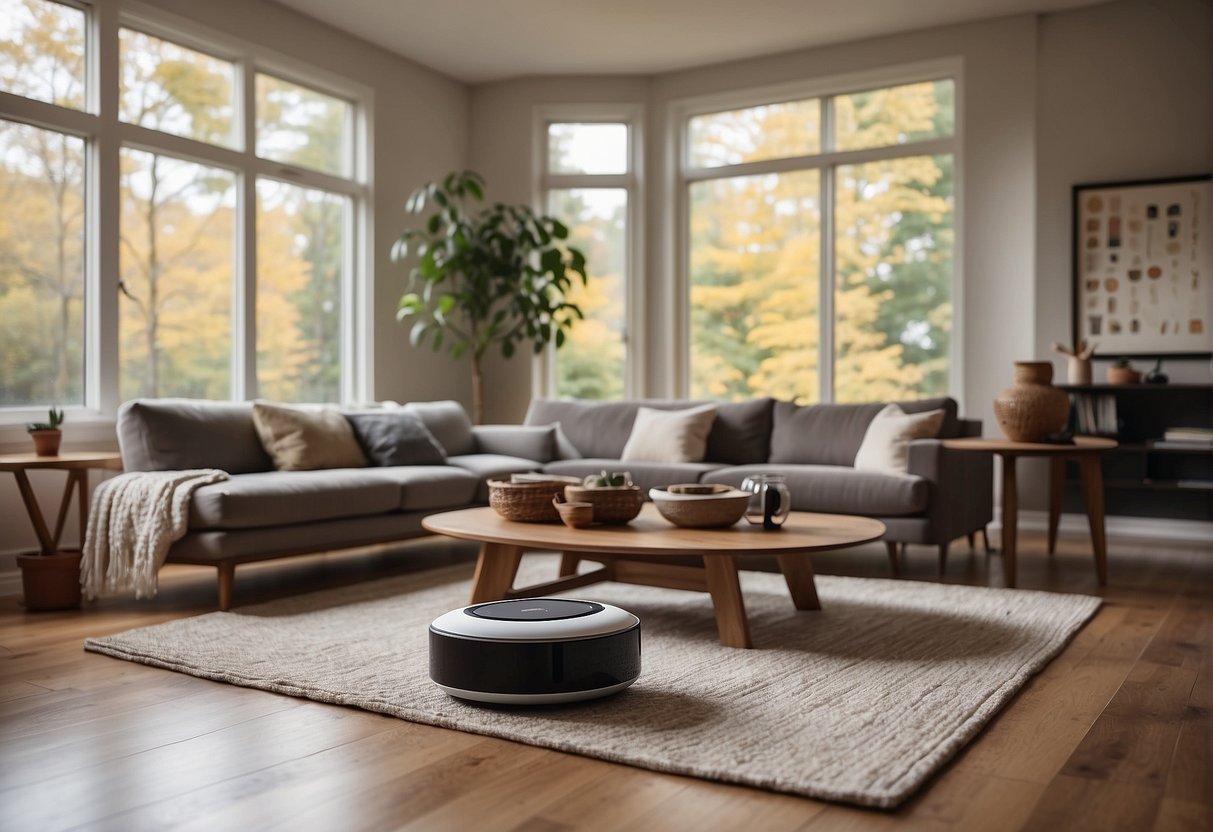
In modern smart homes, entertainment and convenience are anchored by advanced technology that allows for seamless voice control and automation, transforming the way individuals enjoy multimedia content and manage everyday tasks.
Smart TVs and Streaming
Smart TVs are the cornerstone of home entertainment, offering direct access to streaming services like Netflix and Hulu without additional hardware. These devices often support 4K resolution and HDR, ensuring a high-quality viewing experience. Advanced features such as integrated voice control allow users to navigate and select content with ease.
A notable convenience is the remote control, which is no longer a simple channel-changer but a sophisticated device capable of recognizing voice commands and managing a variety of functions across the smart home.
- Key Features to Consider for Smart TVs:
- 4K resolution and HDR support
- Voice control capabilities
- Built-in Wi-Fi for seamless streaming
- Compatibility with various streaming services
Smart Appliances and Gadgets
Smart home gadgets like robot vacuums and smart displays streamline tasks, making daily routines more efficient.
Robot vacuums can be scheduled to clean at certain times, controlled remotely, or activated via voice command. Smart displays act as control hubs, providing visual interfaces to interact with other smart devices, access recipes, or make video calls.
For lighting, smart bulbs and smart lighting systems go beyond mere on/off functionality. They can adjust brightness and color temperature, come with motion sensing options, and integrate with home entertainment systems for an immersive experience. Controlled by voice or through a mobile app, smart lighting adds a layer of convenience and atmosphere to the living space.
- Convenient Smart Home Gadgets:
- Robot Vacuums: Time-saving cleaning with smart navigation.
- Smart Displays: Interactive screens for control and communication.
- Smart Lighting Control:
- On/off and dimming via voice or app
- Customizable color settings
- Integration with entertainment systems for ambiance enhancement
Smart Home Connectivity and Ecosystems
In the realm of smart home technology, connectivity and interoperability are foundational. Devices must communicate effectively within a seamless ecosystem, ensuring that smart functions are both responsive and intuitive.
Understanding Ecosystem Compatibility
The selection of a smart home ecosystem typically dictates the compatibility of devices.
Consumers often choose between major ecosystems such as Apple HomeKit, Google Home, and Amazon Alexa.
Wi-Fi and Bluetooth are the primary connectivity protocols, with Wi-Fi preferred for its range and Bluetooth for its power efficiency.
Each ecosystem supports a range of internet-connected devices, mobilizing them through virtual assistants like Siri, Google Assistant, and Alexa.
For example, Google Home interfaces neatly with Nest products, while Apple’s HomeKit is optimally designed for HomePod integration.
- Ecosystem Examples:
- Apple HomeKit: Utilizes Siri for voice commands
- Google Home: Works best with Google Assistant
- Amazon Alexa: Offers broad device support and Alexa voice interaction
- Connectivity Protocols:
- Wi-Fi: Preferred for its wider range
- Bluetooth: Optimal for its energy efficiency
Integrating with Mobile and Voice Control
The essence of modern smart home systems lies in their ability to integrate with mobile apps and voice control.
Virtually every ecosystem provides a dedicated mobile app for device management, such as the Home app for Apple devices or the Google Home app for Android and iOS.
Mobile apps are central to configuring settings, monitoring device status, and receiving notifications.
- Voice Commands:
- Simplifies interaction and allows hands-free control
- Supported through smart speakers or built-in device microphones
Voice commands have become a staple for controlling smart homes.
Users can command their smart home ecosystems using spoken directives to virtual assistants.
Apple HomeKit products respond to Siri, while Google Home and Amazon Alexa are activated by “Hey Google” or “Alexa” respectively.
This hands-free control enhances accessibility and elevates the user experience.
- Mobile App Integration:
- Central hub for device management and monitoring
- Enables remote access to smart home functions
Energy Management and Efficiency
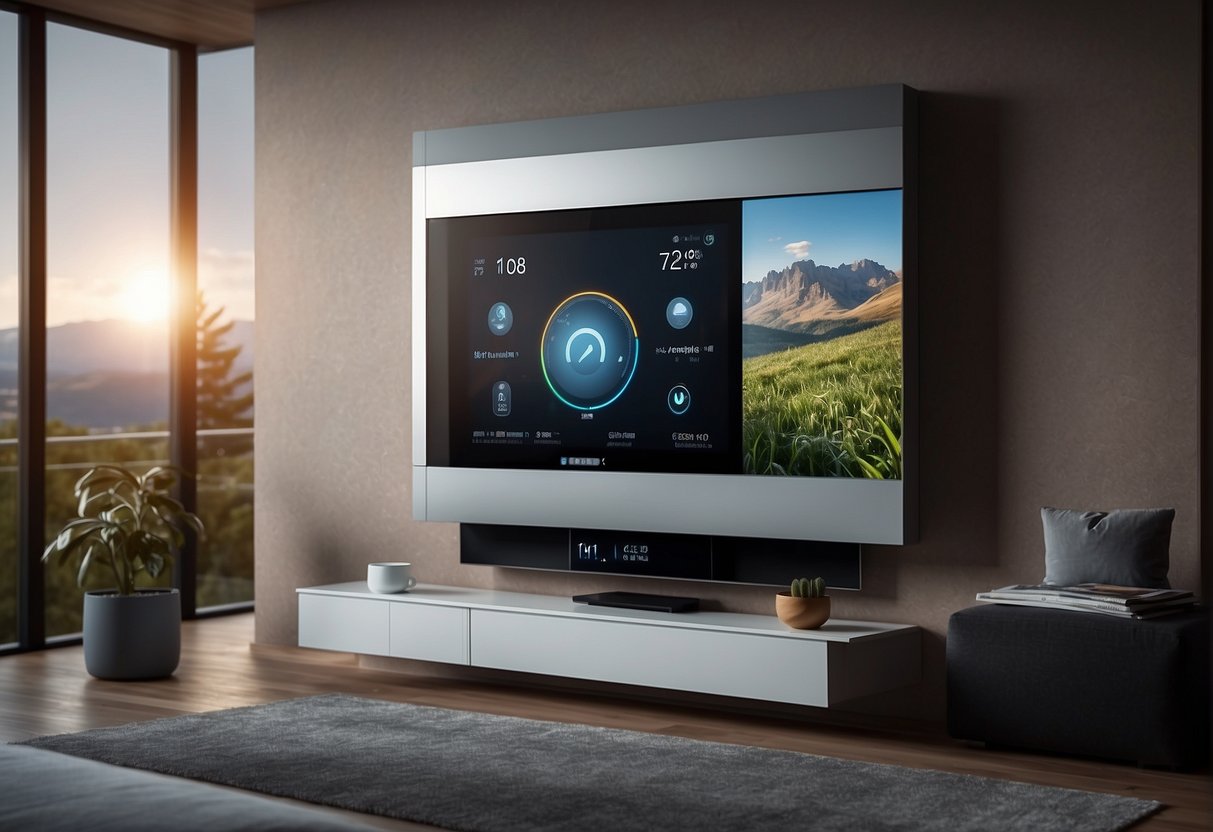
Managing energy within the home has become more streamlined and efficient thanks to smart home technology. Homeowners can now optimize energy use, resulting in both improved environmental impact and reduced energy costs.
Energy-Saving Smart Devices
Smart Thermostats: These devices are central to energy-efficient home heating and cooling.
They not only adjust the temperature based on your habits and preferences but also provide data that help homeowners make smarter energy decisions.
For example, the ENERGY STAR certified smart thermostats can learn schedules and preferences to minimize energy wastage.
- LED Lighting: An energy-efficient lighting option compared to traditional light bulbs. When integrated into a smart home, they can be scheduled or dimmed to save energy.
- Smart Plugs: These are used to monitor and control plug loads, allowing for remote access to turn off devices that may otherwise consume standby power.
Monitoring and Controlling Usage
With smart home energy management systems (SHEMS), individuals have the power to not only track but also control their household energy consumption.
- Energy Monitoring: Homeowners can view real-time data on their energy use, helping them identify where they can cut back.
- Remote Access: Systems allow for the adjustment of devices like thermostats and lights from a smartphone or computer, offering the ability to manage energy use while away from home.
Air Quality: Some systems include features to monitor and manage air quality, ensuring that heating and cooling systems are not only energy-efficient but also promote a healthy indoor environment.
Advanced Smart Home Features
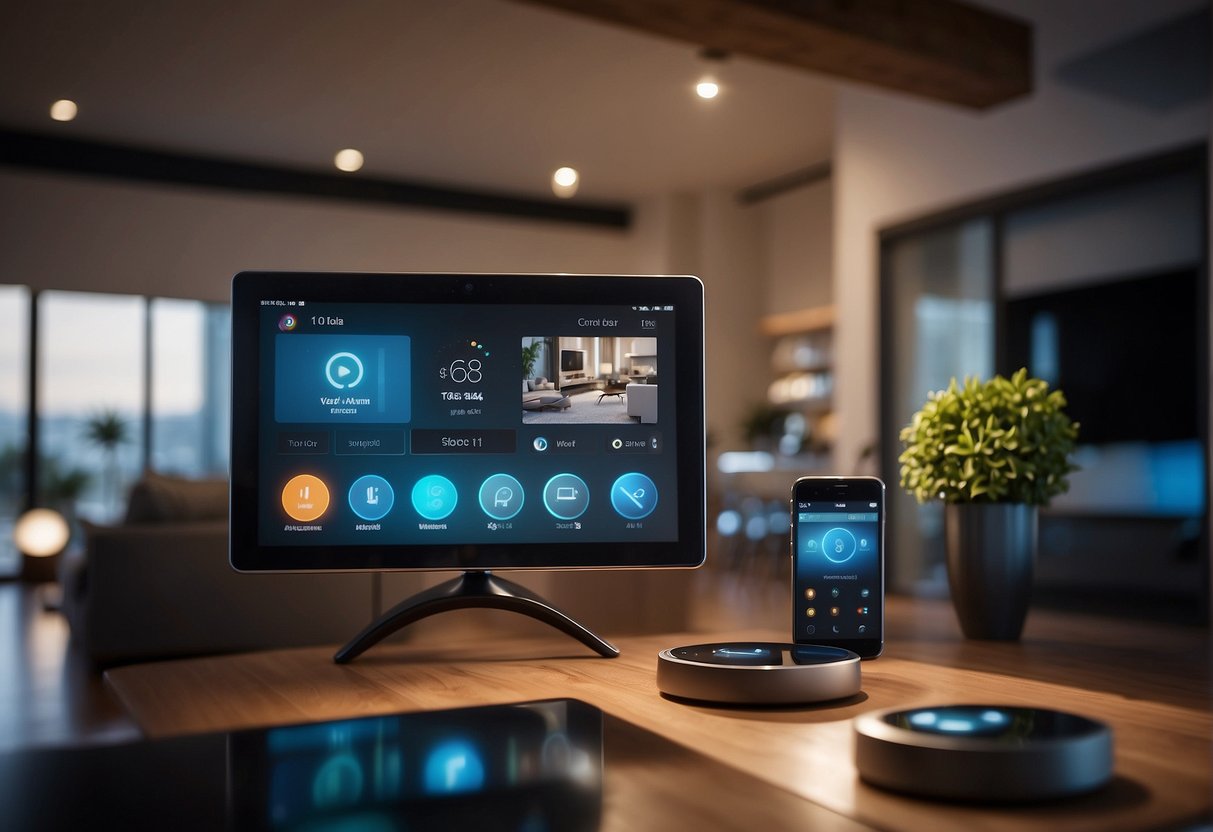
In today’s interconnected world, advanced smart home features stand at the forefront of technology, providing users with unparalleled customization and robust security options through automation and remote access.
Customization and Automation
A truly intelligent smart home system offers extensive customization options.
Users can create if-this-then-that (IFTTT) protocols, where one action can trigger multiple devices, and scene programming, which allows for the simultaneous adjustment of several smart home devices with a single command.
- Scene Programming Examples:
- “Good Morning” might open blinds, start the coffee maker, and adjust the thermostat.
- “Away Mode” could turn off all non-essential devices, activate security systems, and lower heating or cooling to save energy.
Remote Access and Security
The ability to remotely control and monitor one’s home is a central feature of sophisticated smart home systems.
Remote access services are provided through dedicated apps, which offer real-time surveillance and management of smart devices.
- Security Features:
- Smart locks can be locked or unlocked from anywhere, providing both convenience and enhanced security.
- Two-way audio features allow homeowners to communicate with visitors or potential intruders through devices such as smart doorbells.
Security systems go beyond simple alarms; they integrate various smart home essentials into a cohesive network that safeguards against unauthorized entry and notifies homeowners of any suspicious activity.
Selecting the Right Smart Home Products
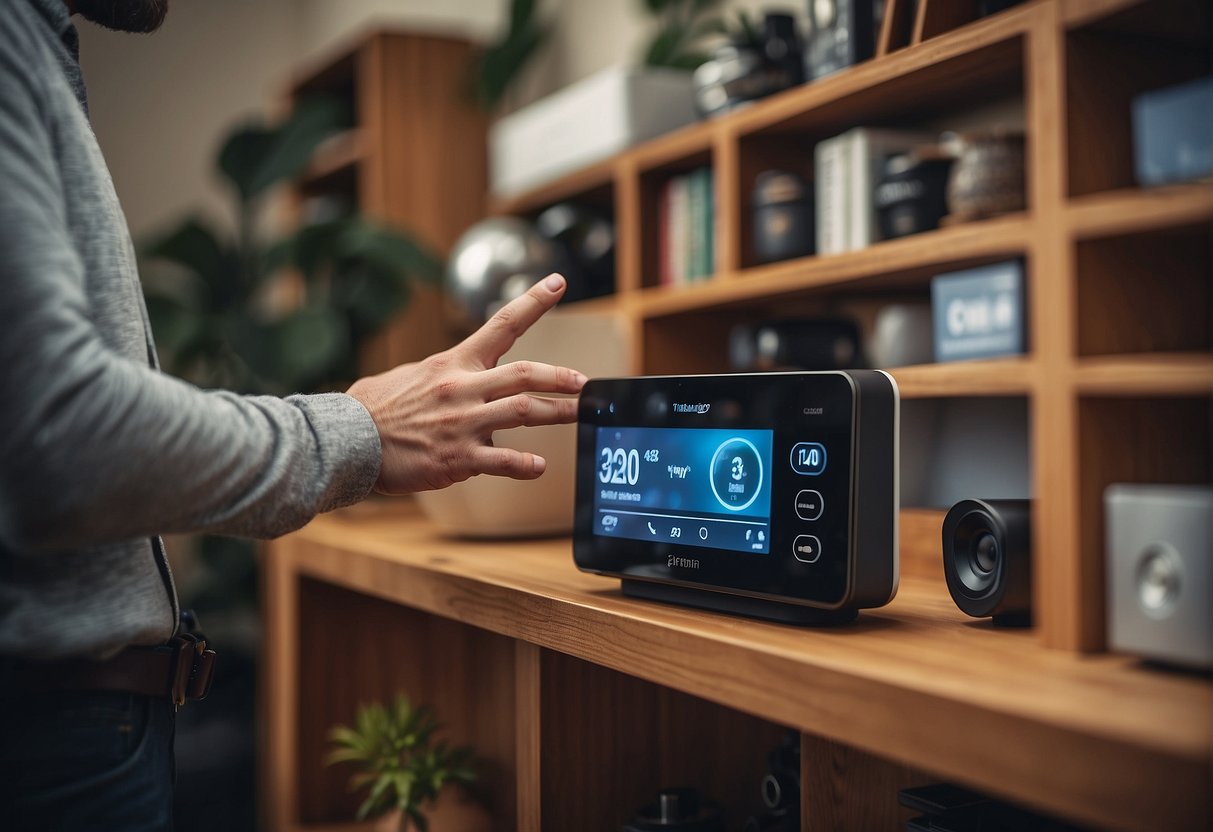
Selecting the right smart home products involves careful consideration of personal needs and system compatibility to ensure seamless integration and operation within one’s home.
Assessing Needs and Compatibility
When individuals consider integrating smart home devices, they should start by evaluating their daily routines and identifying which tasks could benefit from automation.
For instance, a smart sensor could enhance security by detecting movement or environmental changes, whereas a smart outlet could offer convenience through remote control of electronics.
Compatibility is paramount; products should be part of a common ecosystem or support a universal standard like Matter, ensuring they can communicate and work together effectively.
- Smart Switch: Allows for remote control of lighting and appliances.
- Smart Sensor: Monitors environmental conditions, like motion or air quality.
- Electronics Compatibility: Ensures devices can communicate with each other.
Future-Proofing Your Smart Home
To future-proof a smart home, consumers should look for products with firmware that can be updated to support new standards and features.
They should also prioritize products from established companies that have a track record for providing updates and maintaining product support over time.
Investments in technology that supports Matter, the industry-leading smart home connectivity standard, aids in longevity, ensuring that new devices can be added with minimal compatibility issues.
| Consideration | Importance |
|---|---|
| Firmware Updates | Crucial for long-term functionality |
| Brand Reliability | Key for ongoing support |
| Connectivity Standard (Matter) | Integral for expanding smart home devices |
Setting Up Your Smart Home
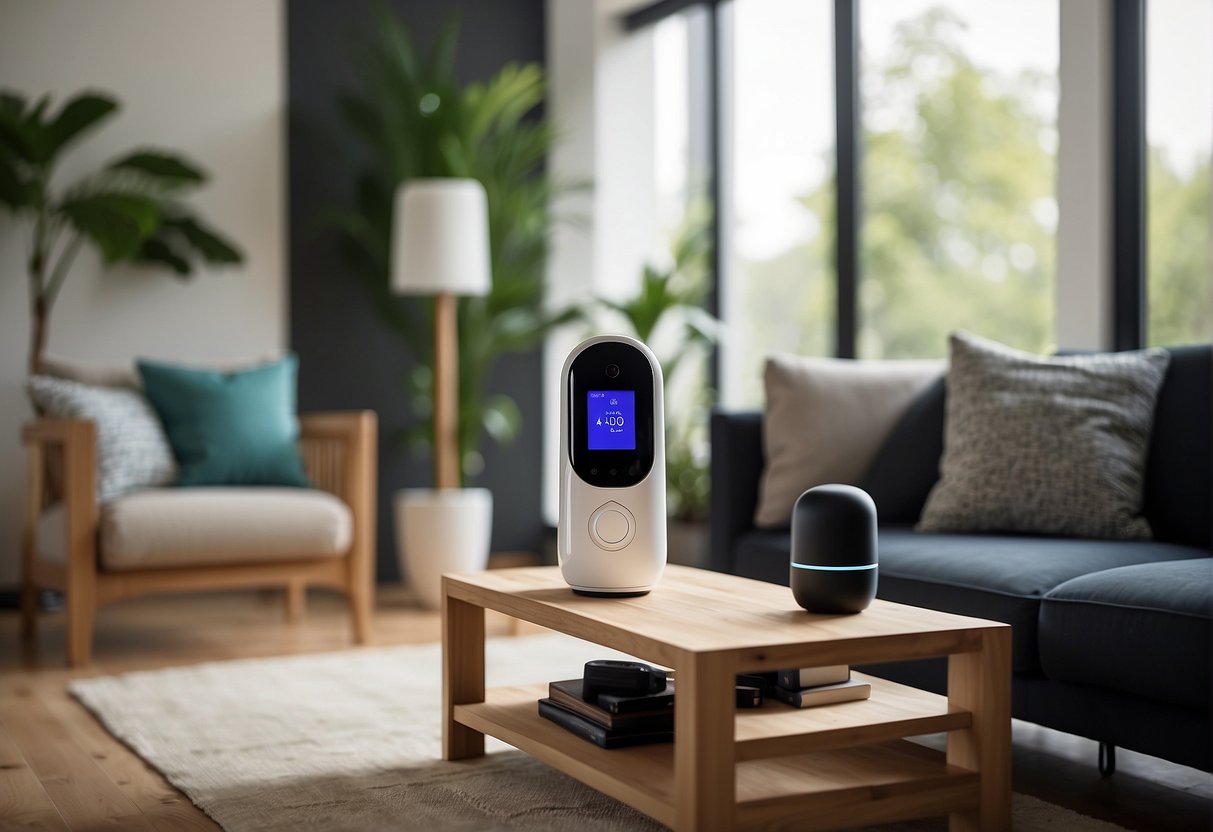
Setting up a smart home requires careful planning and attention to detail. It provides the convenience of voice commands, remote monitoring, and a cohesive ecosystem of devices that work in harmony.
Installation and Configuration
The first step in creating a smart home is the installation of smart devices and their configuration. Here’s how homeowners can proceed:
- Smart Security Systems: They typically include a base station, keypad, and various sensors. After plugging in the base station, one must follow the accompanying app’s instructions to connect and configure each component.
- Smart Smoke Detectors: These need to be installed in key areas following safety guidelines. Once mounted, they connect to the home Wi-Fi and can be monitored via mobile devices.
- Smart Light Bulbs: Users should screw these bulbs into existing sockets and connect them to the smart home network, configuring settings such as brightness and color via a dedicated app.
- Smart Air Purifiers: After positioning the purifier in a strategic location, users can integrate it with their smart home system for remote control and air quality monitoring.
When integrating devices, ensuring they are compatible with the existing smart home ecosystem or hub is crucial.
Using platforms like IFTTT (If This Then That) can automate tasks between different smart gadgets.
Creating a Seamless Smart Home Experience
Achieving a seamless experience involves integrating disparate components successfully:
- Voice Commands: Devices like Nest Audio can be set up to respond to voice commands, managing tasks across the smart home.
- IFTTT: By using IFTTT or similar services, homeowners can create applets that automate interactions between devices, like turning on smart light bulbs when a smoke detector is triggered.
- Unified Apps: Most modern gadgets come with companion apps; however, to avoid app clutter, one should opt for a unified platform that controls multiple devices.
Maintaining a consistent network is fundamental. Most smart home essentials work best with a reliable Wi-Fi connection.
Dual-band routers offering both 2.4 GHz and 5 GHz frequencies can ensure broader device compatibility and improved network stability.
Frequently Asked Questions
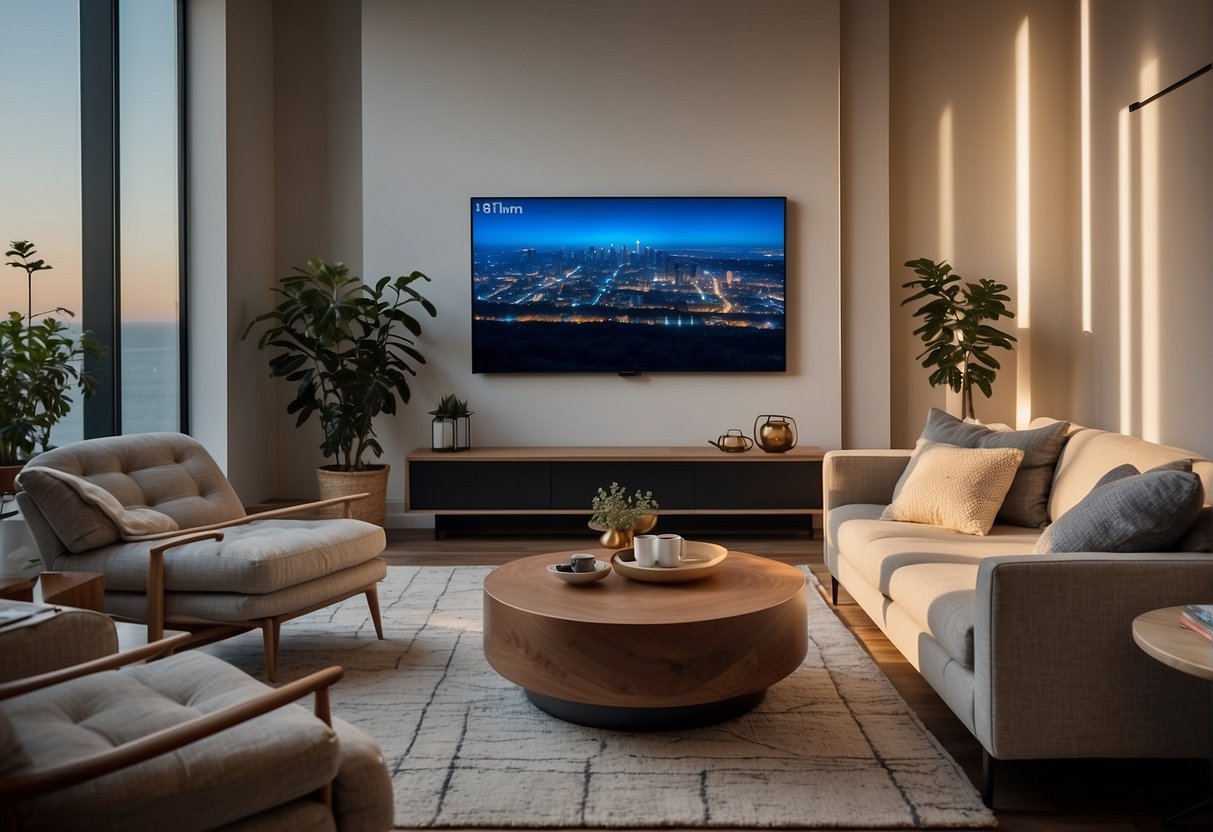
In this section, readers will find answers to the most common inquiries about making their living spaces smarter with essential devices that enhance comfort, convenience, and security.
What are the top devices needed for a fully functional smart home?
For a fully functional smart home, one needs devices like smart thermostats, security cameras, smart locks, and intelligent lighting systems.
These devices form the backbone of a smart home ecosystem, allowing for automated and remote control of the environment.
Which smart gadgets are must-haves for the modern kitchen?
Smart refrigerators and ovens, along with devices like Wi-Fi-enabled slow cookers and smart coffee makers, are essential in the modern kitchen.
These gadgets offer convenience by allowing homeowners to control and monitor their kitchen appliances remotely.
How do smart home systems enhance daily living?
Smart home systems streamline routine tasks through automation. They also offer remote monitoring and control, and can lead to energy savings. They also contribute to increased security and comfort, making daily living more efficient and stress-free.
What are the benefits of integrating smart devices into your home?
Integrating smart devices leads to increased convenience and improved home security. They also offer potential energy savings, and can provide valuable insights into daily habits and usage patterns. This integration can also add to overall home value and appeal.
What are the latest innovations in smart home cleaning products?
The latest innovations in smart home cleaning products include robotic vacuums and mops that can be scheduled and controlled via smartphone apps. They also include smart trash cans that seal and replace bags automatically.
How important is compatibility when choosing smart home devices?
Compatibility is crucial when choosing smart home devices to ensure that all components can communicate effectively with each other.
This allows for a seamless smart home experience, where devices work in harmony to automate and simplify household processes.

